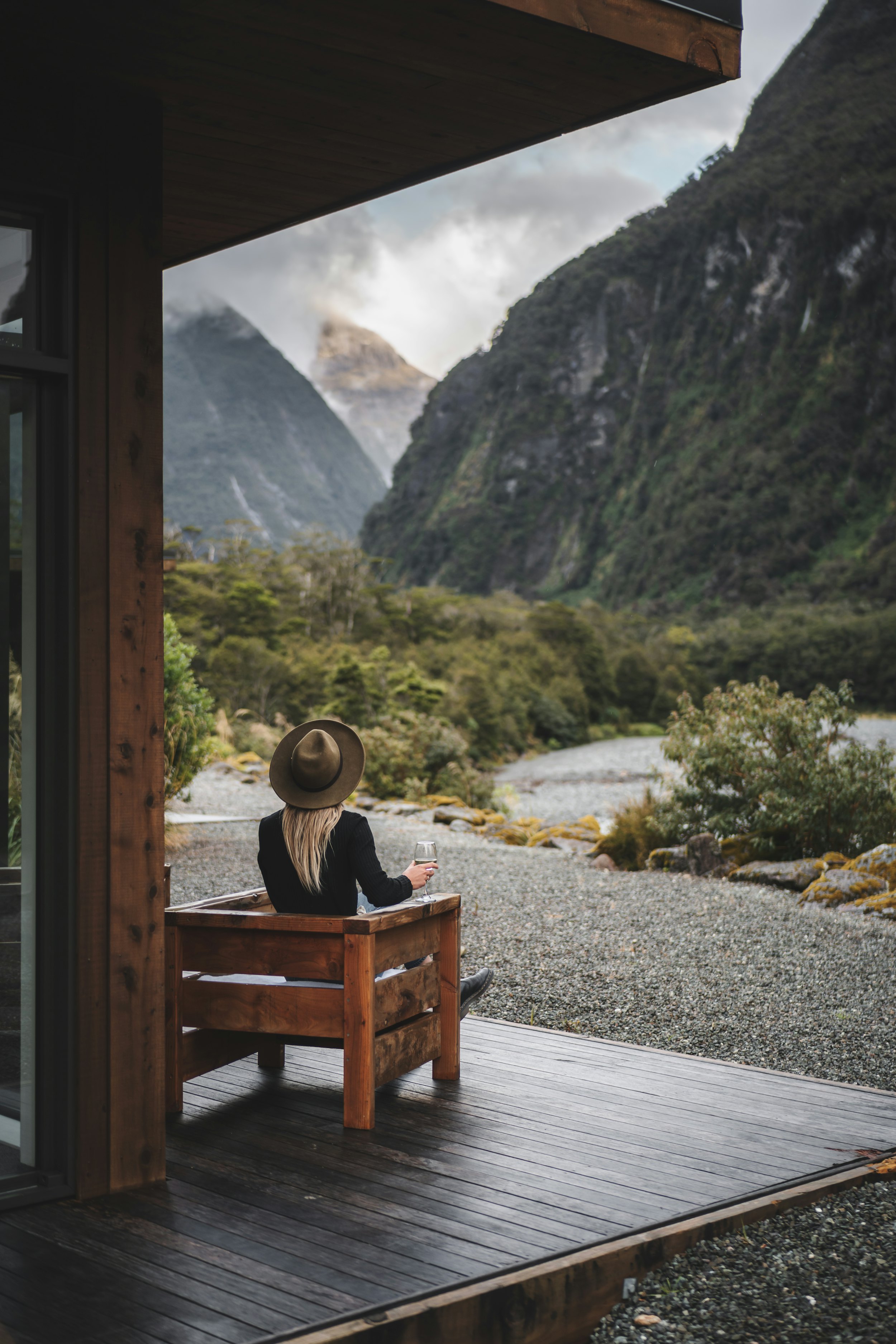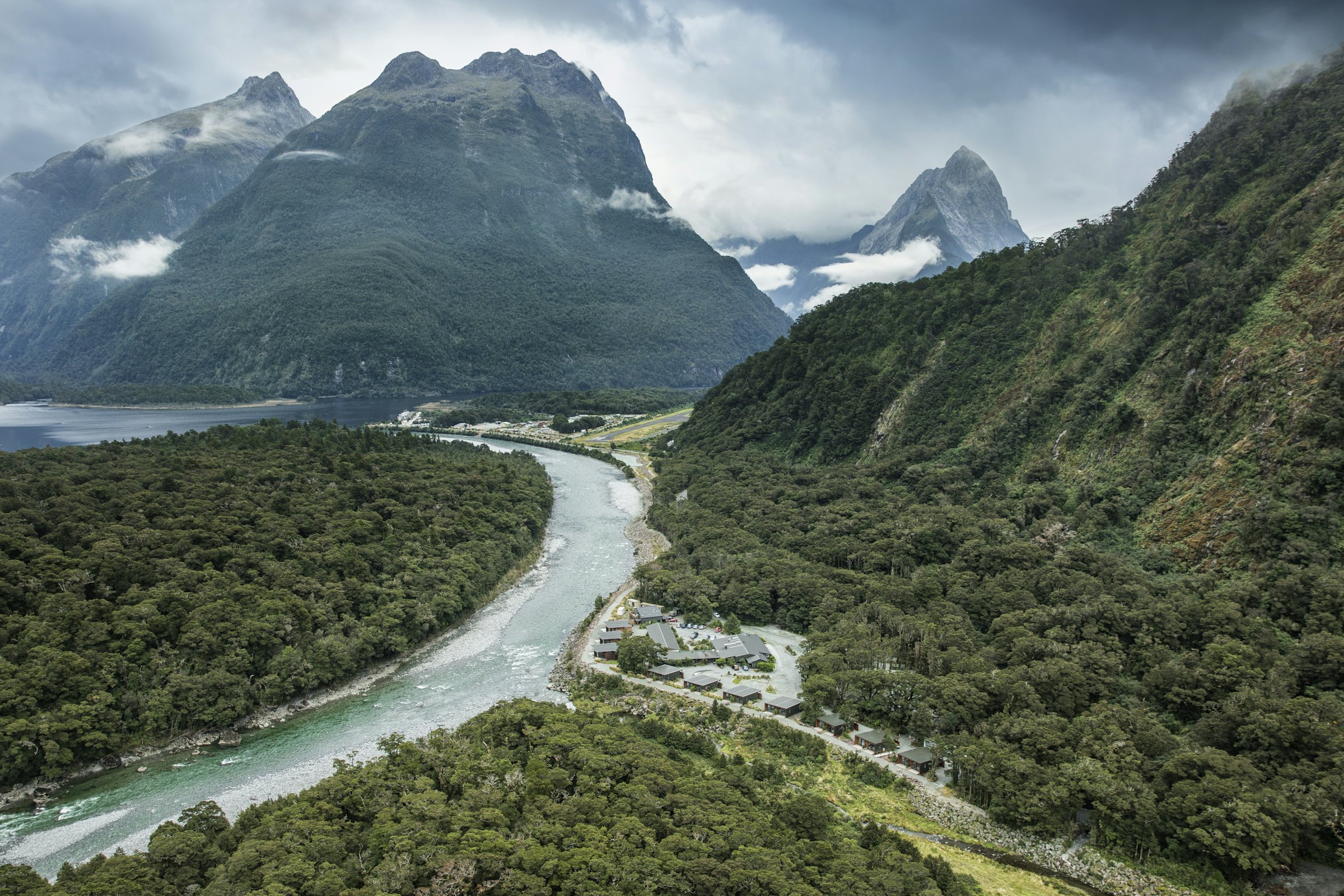Milford Sound Lodge: A 90-year history of hospitality in Fiordland

1935–1950: Road builders and remote beginnings
The Lodge site began life in 1935 as Public Works Department Camp No. 1, established to house the workers building the now-famous Milford Road. Located at the head of the Cleddau Valley, it played a key role in connecting Milford Sound to the rest of New Zealand.
1950–1988: From Government hands to guided walkers
In 1950, the camp buildings were relocated from the Cleddau No. 2 site upstream to their current location. This move marked the transition from public works to accommodation for paying guests - primarily Milford Track Guided Walkers, following a fire at the Mitre Peak Hotel.
From 1950 to 1988, the Lodge was operated by New Zealand’s Department of Tourist and Health Resorts, which later became the Tourist Hotel Corporation (THC). It was leased at different times to the Automobile Association and Johnston’s Hostel, before being taken back under THC management in the 1970s.
During this period, the Lodge served as a base for Milford Track walkers and independent travellers, providing rustic comfort in a remote and awe-inspiring location.
1988–1999: Transition, trials and near closure
The late 1980s and 1990s saw a turbulent time for the Lodge. A series of private owners attempted upgrades and rebuilding efforts, including Boyd Construction during the harsh winter of 1988. Severe weather, structural issues, and logistical nightmares made progress difficult.
Despite the challenges, a Te Anau consortium kept the Lodge operating through the 1990s, maintaining its presence as one of the only accommodation options in Milford Sound.
1999: A new era begins
On November 11, 1999, the modern story of Milford Sound Lodge began when Mike, Jackie, Dave, and Amanda purchased the business. With little more than a shared vision and a lot of determination, the team dove headfirst into reviving the Lodge.
At that time, the Lodge was basic: dorm beds, caravans for staff housing, limited power, and aging infrastructure. But it had potential—and over the next two decades, they would invest time, sweat, and passion into transforming it.
Ownership Timeline Highlights
1999 – Mike McConachie, Jackie Spencer, Amanda and Dave Kluken purchase the Lodge
2013 – David Skeggs of the Skeggs Group becomes a shareholder
2017 – Christine Wallace, who began as an employee in 2001 and has served as General Manager since 2008, joined the ownership team alongside her husband, Mark Wallace.
2000 - 2025: Growth, renovation, and resilience
Over the past 25 years, Milford Sound Lodge has transformed from a rustic backpackers’ base into one of New Zealand’s most sought-after eco-luxury lodges. What began as a humble operation with shared facilities and caravans for staff has grown into a refined, design-led experience, offering high-end accommodation, modern guest amenities, and award-worthy dining in one of the country’s most remote and beautiful locations.
This journey has been marked by continual investment, innovation, and resilience, shaped by our deep respect for this landscape and our vision to offer guests a truly unforgettable stay.
2000 - 2005: The foundations of change
The early years focused on making the Lodge safer, more comfortable, and more functional:
Replaced old metal bunk beds in the dormitory rooms with custom Oregon timber bunks
Renovated the men’s and women’s bathrooms
Installed a central heating system to replace inefficient fan heaters
Began phasing out caravan-based staff housing
Opened the Lodge year-round for the first time
These improvements set the tone for the Lodge’s future - driven by hard work, creativity, and a commitment to bettering the guest and staff experience.
2006 - 2008: Powering up and stepping forward
This phase was marked by major infrastructure milestones:
Connected the Lodge to mains electricity, ending dependence on noisy and unreliable generators
Installed telephone lines and reticulated gas, drastically improving operations
Built and opened the first four Riverside Chalets, ushering in a new era of boutique-style accommodation
These upgrades laid the groundwork for elevating the Lodge from basic to premium.
2013 - 2015: Expansion and experience
As guest demand grew, so did our offerings:
Added Mountain View Chalets and two more Riverside Chalets
Completed major upgrades to the lounge and dining areas (not yet what it is today)
Repositioned and expanded the campground into the surrounding native forest
Moved to a fully reticulated gas system for greater energy efficiency
This period also saw the rise of Pio Pio Restaurant and a more holistic, design-focused approach to the Lodge’s identity.
2015 - 2020: Raising the bar
A period of significant transformation and investment:
Reception area rebuilt and modernised with a significant investment
Opened the Lodge’s Chalet Suites, a family category with 2 bedrooms and more space for families or those travelling together
Launched a reimagined food and beverage experience - transitioning from basic meals to chef-designed, seasonal menus at Pio Pio
Installed a new commercial kitchen (a chef's dream) and sealed the Lodge’s entrance road for an easier-to-maintain road
Completed the Green Project, stepping into our sustainability journey
2020 - 2023: Resilience through adversity
These years brought some of the toughest challenges:
Navigated major flooding in February 2020, which damaged infrastructure and closed access for weeks
Just weeks following these floods, weathered the impacts of COVID-19, including border closures and a multi-month lockdown with staff living onsite in a remote location, far from overseas family and friends
Completed a transformational renovation of the Main Building in late 2023 - a defining moment symbolising the Lodge’s growth and maturity
Despite adversity, these years deepened our commitment to sustainability, guest care, and community.
2025: A milestone year
As we celebrate the Lodge's 90th anniversary, we are unveiling our most luxurious improvements yet:
Complete renovation of all Riverside Chalets, now featuring:
Cedar-lined interiors
Private outdoor baths
Bespoke furnishings and design-led details
Construction of a new Manager’s House, supporting key staff and long-term leadership at the Lodge
These updates solidify Milford Sound Lodge’s reputation as a destination where luxury meets wilderness, and every detail has been carefully considered.
Built with purpose, shaped by place
Throughout this journey, we’ve weathered wild Fiordland winters, literal power struggles, and once-in-a-generation global events. But through it all, our team’s vision and values have remained constant.
Milford Sound Lodge today stands as a testament to what’s possible when passion meets perseverance. We are proud to offer a world-class guest experience - one that honours the natural world around us and the decades of people who’ve helped shape this very special place. Scroll through the images below to see how far we’ve come - from humble beginnings to the Milford Sound Lodge you see today.














